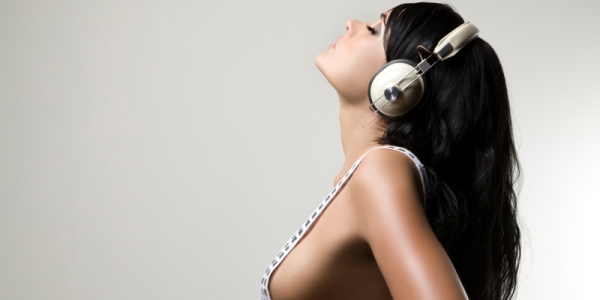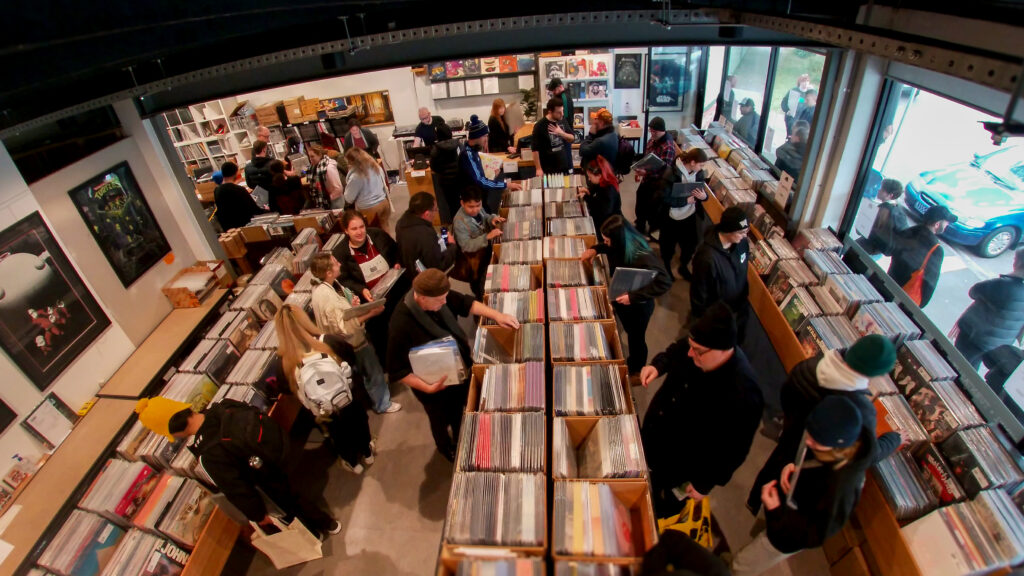Hartnoll is practical about the endurance of dance music over time. “I’ve watched it slowly spread across the world like some sort of happy virus – it came out of pockets of America, it infected Europe massively really quickly, but then, you kind of view it from where you’ve been booked for gigs. Early on, we got to do an underground party in Australia – there’s always been a healthy scene there, especially in the early nineties. Japan, I’ve always taken to straight away, but Germany has never particularly taken to us. So how has it reached out across the world? I’m not sure. I’m too immersed in it – I haven’t got the perspective to see it from a distance. The thing is, everybody likes to dance, don’t they? I didn’t think it was a quick, finite thing. It did seem to be quite special in a way, it’s such a primal thing. It’s never going to stop, it’s never going to go away and it probably hasn’t changed that much from medieval peasants dancing in a tavern to now!”
Orbital’s enduring presence within dance music’s highest reaches can be viewed as a testament to the frequently groundbreaking, visionary nature of their work – yet the two felt that there was something missing, and the time they spent away from Orbital provided them with some much-needed perspective, as Hartnoll explains. “At the moment, we’re in a really good place – and the only way we could get there was to stop doing it for awhile,” he says. “Orbital was allowed to die, and we were allowed to stop doing it and realise what we’d missed and how wonderful it really was. But we needed to be refreshed, we needed to be able to do those side projects and this other stuff to try something different so we could come back into the fold and go “oh, look what I’ve done this! What have you learned? I’ve learned this, I’ve done this!” and bring a whole fresh perspective to it. We’d never be where we are now if we hadn’t done that, so I’m really glad we did it. It all feels so fresh now, and I think we’ve learned how to keep it fresh, too. Being able to step aside and see it from a further perspective meant that getting back in the studio, I kind of knew what Orbital was, whereas before I don’t think I did, it didn’t seem like it was anything. We agree on things in the studio, but it’s also got this kind of sentiment to it. Stylistically, Orbital can be anything, but it’s a mindset. It’s hard to pin down, but you know when it feels right.”
That wide-eyed sense of adventurous passion for new music is one of Wonky’s most enjoyable features – there’s no doubting that the love affair for the dancefloor that Orbital has spent twenty years enchanted by is still burning, alive and well. “Definitely, and not taking ourselves too seriously is important to that,” he agrees. “Being honest, and enjoying what we’re hearing and the music that we love, and bringing that to our party. For example, was listening to some dubstep and going, oh let’s try and inject a little bit of that into this track. Why don’t we try that slow? Just doing things like that. I’ve been listening to lots of folk – I feel like I’ve been bringing a folk sense of melody and harmony to that album. I don’t think anybody else would spot it, but I kind of hear it, and bringing all these things we love together is a way of keeping yourself honest and pleasing yourself.”
It hasn’t been long since Wonky has found itself in the hands of critics and listeners, and the reactions to it have been overwhelmingly positive, welcoming the duo back into their rightful place in dance music’s canon. “I’m very happy with the way it’s turned out,” Hartnoll says, of its reception. “I’m so happy that I hope people like it, especially the critics and people writing the reviews, but if they don’t, the only reason to be upset by bad press is because it might influence other people’s opinion. But on a personal level, I’m entirely comfortable with it and if other people do or don’t like it, it is what it is. So far, fingers crossed, we seem to be getting a good reaction from people!”
This has been mirrored in the reception to Orbital’s return to festival stages and clubs across the world. It was a reunion slot at the UK’s Big Chill Festival in 2009 that inspired their return to work, and shows in the twelve-month period that immediately followed celebrating twenty years of Orbital were talked-about for ages, including dates at RockNess and Glastonbury. The latter being a particularly moving one, given that it was Glastonbury in 1994 that won them approval from people beyond dance music’s limited reach at that time. “A big crowd’s a big crowd, and that twenty year tour will always be with us, but the reason why the first time at Glastonbury will always resonate is for a number of reasons. One, it was the first time we’d ever done a big festival – it was kind of like jumping into a swimming pool of cold water. You do remember that first intense moment – it was absolutely shocking, a Peter Jackson, Lord Of The Rings, Mordor sort of army in front of you and you’re there to entertain them. It’s pretty scary stuff. But immense fun as well, especially when they all cheer at the same time at the end of a song and you just can’t believe they’re shouting at you, in joy, and you’re like, oh my god! Unbelievable. The other important factor is that it was the first time that Glastonbury had had a full-on dance kind of thing. They’d had the Shaman and the Orb, as well as us – that absolutely blew people away. They really wanted it, I could feel – there was always that big gap in the market, but once they did, it showed that it was a viable form of music. On a more personal level, it’s when we really discovered our crowd wasn’t necessarily a clubbing or dance crowd – it was more a mix of indie and rock and dance fans all mingling together, and that’s when we realised we were a festival and not a rave band.”
Orbital dropped by in the later half of 2010 for a series of shows across the country, dazzling audiences who’d been gagging to see them for years with their astounding instinct for making people move and adventurous take on performing loop-based electronic music out live. “We get all the parts of the song ready on a computer and I’ve got like five iPads I jam with the whole arrangement of the song – there’s no structure to the song, it’s just all the parts ready to go,” Hartnoll explains. “And we have a number of big old analogue synths out there on stage – some of them don’t even have memory though, so you have the make up a sound and play them as you go along. We literally jam with the arrangements – we know what songs we’re going to play vaguely and have an idea as to how you want to play each song, but it changes and develops over time, and songs stretch out or shrink every night depending on how you play and how the audience reacts. You follow the audience and try and take them somewhere. It’s a proper kind of improvisational arrangement, sound sculpture thing. It’s great fun – tracks that we’re playing from the new album have already started developing and changing while rehearsing is the studio. The album is the starting point, then you go off and see where it ends up. I could go on and on and on.”
BY MIKI MCLAY







